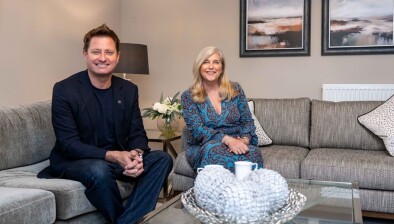Two fifths of Scots believe property ladder is out of reach
 New research has suggested that two fifths (40 per cent) of Scottish non-homeowners do not believe they will ever be able to buy their own house.
New research has suggested that two fifths (40 per cent) of Scottish non-homeowners do not believe they will ever be able to buy their own house.
Bank of Scotland’s latest How Scotland Lives research has found that just over a quarter (26 per cent) believe this to be a normal situation to be in, while 14 per cent are concerned about the prospect of never being a homeowner.
Home building industry trade body Homes for Scotland warned that the aspirations of many individuals and families across the country were being stifled.
Of those who consider it normal to never be able to buy a home (26 per cent), it seems the older generations are more accepting of the situation, with almost half being aged 55 and over (48 per cent), closely followed by the 45-54 year olds (46 per cent).
Of the 14 per cent who are concerned about never affording a home, it is the 35-44 year olds (23 per cent) who worry most about this, followed by the 45-54 year olds (17 per cent).
While a quarter of Scottish non-homeowners (26 per cent) believe they will eventually be able to buy their own home, without the need of any financial assistance other than a mortgage, there is a marked difference between the generations.
The younger generations are more optimistic about buying a home, with almost half (45 per cent) of 18-24 year olds and just under two fifths (38 per cent) of 25-34 year olds believing they will be a homeowner without the need to borrow money other than a mortgage. Only 4 per cent of respondents aged 50 and over were of the same mind-set.
Of the respondents who feel they will need some financial assistance from family members in order to buy a home (8 per cent), it is the younger generations that think this, with 12 per cent of 18-24 year olds and 10 per cent of 25-34 year olds expecting to borrow from relatives.
Those living in Aberdeen and the surrounds (40 per cent) are most confident about buying their own home independently, closely followed by Glasgow (35 per cent). However 13 per cent of people living in the Lothians believe they will need financial help from family members in order to do so.
Those living in Fife are most pessimistic about home ownership, with over a third (37 per cent) believing they will never be able to own their own home and thinking this is normal now. Dundee (35 per cent), Mid Scotland, Highlands & Islands and Central (all 31 per cent) are of the same opinion. A fifth (20 per cent) of non-homeowners living in South Scotland are concerned that they will never be able to buy their own home, closely followed by Fife (18 per cent) and Glasgow (17 per cent).
Nicola Noble, mortgage director at Bank of Scotland, said: “It’s concerning that two fifths of Scots don’t feel they will ever be able to buy their own home, with a quarter of those thinking that this is a normal thing in this day and age. However, on a more positive note it’s reassuring that a quarter of Scots feel financially stable enough to be able to eventually buy a home without the need for financial help other than a mortgage. It’s possible schemes such as Help to Buy and the Help to Buy Isa are making the younger generations more optimistic about being able to afford a home one day.”

As the building of new homes remains 40 per cent down on 2007 levels, Homes for Scotland chief executive Nicola Barclay emphasised the industry was doing all it could to step up production but that more government action was needed to ensure that Scotland’s housing meets the diverse needs of all those living here.
Ms Barclay said: “Whilst it is encouraging that the Bank of Scotland report reveals that younger generations are more optimistic about buying a home, the reality of the situation is that affordability continues to impact on this most fundamental of ambitions. It is therefore crucial that we see a significant increase in the production of all-tenure home building. This is the only way to tackle house price inflation and would also alleviate pressure on other sectors.”
Barclay’s comments also followed the launch in England of the ‘Redfern review into the decline of home ownership’. With Scotland experiencing a six per cent fall between 2009 and 2014, she attributed this to the dramatic decline in home building and the difficulties many people have encountered in getting large mortgage deposits together.
Ms Barclay added: “That is why we are calling on the next Scottish Government to manage a return to pre-recession levels of home building which would mean at least 100,000 new homes by the end of the next parliamentary term.
“With details of the next phase of the successful Help to Buy (Scotland) shared equity initiative recently announced, we are hopeful that this could go some way to helping achieve this target and enable more Scots to take steps onto and up the housing ladder. However, the impact of criteria changes and reduced funding for the successor scheme remains to be seen.”








